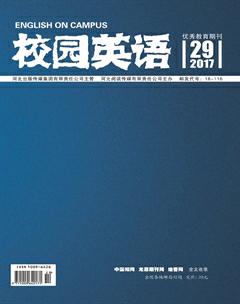How to Use the Communicative Language Teaching in English Teaching of Ethnic Group Students
阿丽亚·阿巴斯
【Abstract】This paper reviews the theory and background of Communicative Language Teaching (CLT), to show ever-growing need for good communication skills in English has created a huge demand for English teaching around the world. Many people want to improve their English ability, so it discusses some ways in which teachers have responded to the challenges by adapting new ideas and developing methodologies suited to their own situations, especially teaching English in ethnic groups. And also discuss the advantages and disadvantages of Communicative Language Teaching (CLT).
【Key words】Communicative Language Teaching; Ethnic group Students experiment; advantage; disadvantage
1. Introduction
The origins of Communicative Language Teaching (CLT) are to be found in the changes in the British language teaching tradition dating from the late 1960s. With its emphasis on meaning and communication, the CLT aims to develop learners “communicative competence” and create meaningful interaction by providing comprehensible input and by using authentic material (Kern & Warschauer, 2000). This paper gives an overview and principles of communicative language teaching, and how it effects ethnic group students English learning in their studding.
2. Theories on the Communicative Language Teaching
Communicative Language Teaching (CLT) originated from the changes in the British Situational Language Teaching approach dating from the late 1960s (Richards & Rodgers, 2001). Communicative language teaching (CLT) is an approach to the teaching of second and foreign languages that emphasizes interaction as both the means and the ultimate goal of learning a language. At the level of language theory, Communicative Language Teaching has a rich, if somewhat eclectic, theoretical base.
3. Experiment
3.1 General description of teaching in ethnic group students Class
The author had occasion to teach English Language course to the ethnic group students at the Xinjiang Agriculture University in 2014. The trainee group consisted of 45 students from various parts of the country. The author grouped them on the basic of the marks of a test I placed them in 5 mixed ability groups. Each group comprised a student (according to the test result) as leader and aim was to encourage peer interaction and peer learning. And there are some classroom activities used in CLT, they were Example Activities, Role Play, Interviews, Information Gap, Games, Language Exchanges, Surveys, Pair Work.endprint
3.2 The aim of using this method in the class
The aim to use CLT in the English teaching is to improve ethnic group students abilities to communicate with others easily and learning by teaching, especially to encourage peer interaction and peer learning, but sometimes the participation is hardly what we would define as ‘negotiation, but merely a contribution.
3.2.1 Role of the teaching materials
A wide variety of materials have been used to support communicative approaches to language teaching. Materials thus have the primary role of promoting communicative language use. There are numerous textbooks designed to direct and support Communicative Language Teaching.
3.2.2 Role of teachers and learners in the classroom
In the CLT, teachers assume a responsibility for determining and respond?ing to learner language needs. The teacher has two main roles: the first role is to facilitate the communica?tion process between all participants in the classroom, and between these participants and the various activities and texts. The second role is to act as an independent participant within the learning-teaching group.
3.3 Result of the communicative language teaching in class
According the experiments in class we should pay attention to there basic points of communicative language teaching. The teacher can provide the “tokens” of the language, but learners themselves must learn to use it, to adapt it to situations they have not chosen themselves, to say what they have not been explicitly taught to say.
4. Conclusion
Communicative Language Teaching is best considered an approach rather than a method. Thus although a reasonable degree of theoretical con?sistency can be discerned at the levels of language and learning theory, at the levels of design and procedure there is much greater room for individual interpretation and variation than most methods permit.
References:
[1]Andrewes,Simon The CLT Police:Questioning the communicative approach.Modern English Teacher Vol 14.No 2.2005.
[2]Bax,S(2003)The end of CLT:a context approach to language teaching ELT[J]2003 57:278-287.endprint

